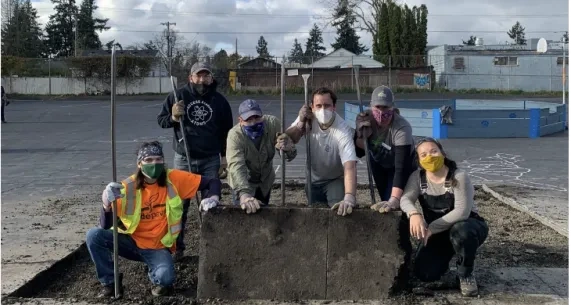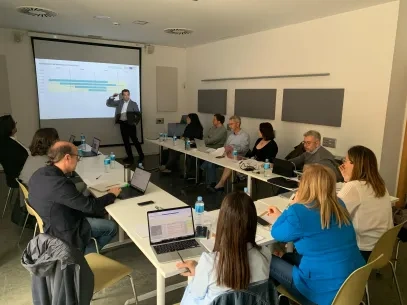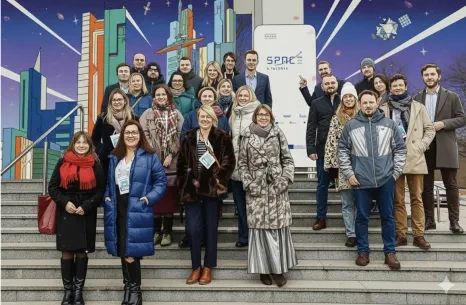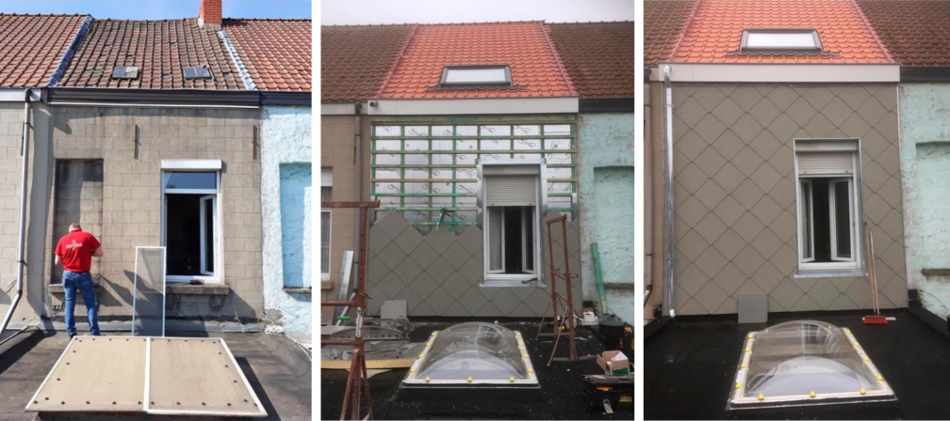Challenges - Public Procurement
In a crisis, procurement delays are likely as staff are redeployed to respond to unforeseen events and rapidly changing circumstances. COVID-19 led to cities reorganising and re-prioritising their activities and redeploying their procurement staff to other roles (refer to Theme 1 of this study about the changing roles of staff at the time of crisis). This had a direct impact on procurement timelines as the key staff, necessary to sign off expenditure and to manage the tender processes, were not available. This delayed or stopped procurement processes proceeding as planned (UPPER project, Latina, Italy).
Procurement procedures are relatively complex and require discussion between project leaders and city staff. The lockdown requirements meant that staff could not communicate as easily so there was a delay while the teams migrated to using online media. Online meetings for procurement projects were not as efficient as those held previously face-to-face.
COVID-19 forced municipalities to move people to different roles which made financial approval more complex. It was no longer possible to follow established approvals processes and new procedures had to be identified, understood by all staff, and followed. These changes elongated project timelines.
Disruption of local industry fuelled higher prices
- Many projects identified the rapid rise in supply side prices. Due to the pandemic, firms cut back on production or were unable to operate effectively. This reduced supply and increased prices rapidly. A market in which prices are rising rapidly increases the risk for everyone in that market.
- There is a specific problem or challenge where the tender engagement involves medium to long-term supply. Firms may not wish, or indeed be able, to commit to supplying the goods at an agreed fixed price for the duration of an engagement. This is especially true where there is a construction component - this was a common challenge experienced by projects (as for the ICCARUS project, Ghent, Belgium example below). Global building supplies were limited and their cost rose very significantly in some instances - wood was a specific example.
Innovation projects are riskier
- UIA projects are innovative and so involve greater risk as they are developing something which may be untested. They require new products, services, or processes to be delivered that are not available in the market.
- Public procurement works best when the product or service being sourced is well defined and easily specified. Procurement becomes more difficult for something novel as it is harder to set the specification fully and accurately at the outset.
- Normally, the buyer and the supplier can discuss the buyer’s needs and agree an overall specification. This is much more challenging in times of crisis. During the COVID-19 lockdown, these meetings had to be held digitally/on-line. Projects (for example DIACESS project in Växjö, Sweden) noted that this made the process of discussing and agreeing the specification less efficient and reduced the quality of the tender submissions put forward (where tender submissions were received, as often they were not).
- The novelty that characterises innovative projects creates an inherent risk for those submitting tenders to deliver them. When combined with other market-related risks, suppliers simply decline to bid, which in-turn impacts on the project’s progress.
Tight local markets
The RE/SOURCED project, Zwevegem, Belgium, intended to procure a small, pumped storage (renewable energy) generation capability as part of their overall energy mix. During the COVID-19 pandemic, they issued a tender but received no response from the market. They re-tendered but still received no response. When the project team sought feedback from likely suppliers, they said that “the job is too small, the risk too high [we might take time out to submit a tender, only to lose it] and demand from commercial clients, who were desperate, is very strong”. If the supplier focused on commercial customers, they could demand a price premium and achieve it, whereas for a tendered job, they would have to be price competitive.
Overall, when the market is ‘tight’, suppliers choose more profitable/straightforward engagements with the private/commercial sector (as public procurement is time-consuming and riskier) for which they may not need to tender, nor agree to a supply price that must be maintained for a fixed period. Effectively, when prices are rising and supply is tight, suppliers can be especially choosy.
- Several projects encountered notable procurement challenges at a local level that were associated with global supply chain constraints. For example:
- The Košice 2.0 project, Košice, Slovakia, had intended to purchase equipment for 3-D mapping that was being sourced from China. Global goods shipments stopped due to COVID-19 and the project was unable to proceed until the partners found another solution.
- DIACCESS planned to source sensors from China. Supply of these stalled. The project team looked for other commercial suppliers but no one appropriate was identified. As with Košice 2.0, they needed to find another solution for the project to proceed.
The key observation is that these project challenges were caused by global supply chain challenges, not local ones - but the local impact was clear and strongly felt.
As we noted above, COVID-19 severely disrupted supply chains and normal business activities. Goods and services were harder to procure, and prices rose unpredictably and significantly. It is very hard to frame an appropriate procurement process when market prices are constantly changing and, critically, are rising. UIA projects found it necessary to review their project timelines to accommodate delays and ensure the timelines remained realistic.
Responses - Public Procurement
We recommend that project managers check that the city has maintained a public procurement team and that those responsible for approving procurement initiatives are still in post and are continuing to fulfil their procurement roles. These checks may need to be undertaken frequently as roles and responsibilities can change without notice during times of crisis. This was a particular challenge during COVID-19.
In times of crisis, project managers need to be more proactive and agile when responding to emerging situations. Traditional procurement procedures may be inappropriate or indeed non-viable (if market prices are rising rapidly or if the global market has been seriously disrupted). In these circumstances, it may be necessary to introduce more relaxed procedures on a temporary basis - subject to obtaining legal approval to do so. It is important for legal teams to be engaged early to identify what might be possible to do.
This could apply to all projects at all times - not just times of crisis - but it is especially important during crises. It is also a common characteristic of projects that successfully adjust their activities when faced with COVID.
A key observation from successful UIA cities - don’t assume that everything must be procured.
To overcome project delays caused by procurement challenges, teams had to be innovative and come up with novel solutions quickly. Project leaders reviewed their procurement requirements and prepared contingency proposals. These proposals looked to do things differently.
We recommend projects use the whole project team/partnership when undertaking this review. They should facilitate team working to encourage the partnership to work together. As projects are multifaceted activities involving a range of partners leading on specific tasks/activities, all member organisations should be part of the review process, so that each can identify opportunities for procuring supplies differently within their areas of responsibility.
- Look for in-house providers
Project teams in the CAMINA project in Almeria, Spain, identified those (smaller scale/value) items on the procurement list that could be met by in-house companies or departments within the cities - this needed considerably more management effort than an external procurement, but it kept the projects moving that would otherwise have stalled had the team needed to rely on an external source of supply.
- Look at the required solution rather than the product/service to be procured
We recommend that projects review all the goods and services that need to be procured as part of the project. For each item, they should consider if it might be acquired in a more straightforward way. They should look at the value of the procured item and ask if it could be obtained by doing things differently?
This was the case with Košice 2.0 project “we re-thought the list of items that should have been bought in. For example - we wanted to buy equipment for 3D mapping - lidars - but there was a global shortage due to COVID. Instead of waiting for the technology, we contracted the third parties who could provide city mapping as a service.” This freed up budget for other project areas.
- Look innovatively at local providers
The DIACCESS project planned to source sensors from China. However, due to a global shortage, the city worked with a local university to develop an alternative. This enabled the project to be delivered, built links to the university, and developed the research/commercial competencies of the university. All of these have a positive effect on the local economy.
- Look at whether the public sector must procure the service or product
The Camina project reviewed the list of all items to be procured and selected those that their private sector partners could be asked to procure.
- Modify procurement processes to make the process of procuring items and services easier and less risky (for the city and for suppliers).
| A Zoom into the Projects ICCARus, Ghent (BE) – PROCUREMENT
Ghent suffers from a lack of quality affordable housing for people on low incomes. ICCARus catalysed the renovation of 100 houses in the city using a regenerating fund - the public funding was ‘recycled’ to support a larger number of projects (see the website). For procurement, the agreement is between the building owner (advised by a Renovation Counsellor) and the contractor - not between the owner and the city - to keep the procurement as simple as possible. ICCARus checked potential contractors’ financial status, but no more. Works frequently had to be postponed due to COVID-19 supply problems and the value of advanced payments had to be increased. Keeping the contract between the owner and the contractor made it more flexible and effective. The Renovation Counsellor was critical - each house is different, and the Counsellor could ensure the best contractor was chosen for each situation. In Ghent, there was a shortage of contractors so there were relatively few firms available to approach. When procuring, they avoided asking too many firms to quote as firms will stop bidding if they have too many unsuccessful submissions. ICCARus typically sought two quotes per renovation project. |
This was especially effective for construction procurement.
The Cup4Creativity project, Budapest, Hungary, reduced the number and level of compliance conditions that suppliers must meet before being considered as an eligible bidder. This lowered the ‘compliance hurdle’ tenderers faced.
ICCARus extended tender response times to allow bidders more time to prepare submissions.
An example of good practice identified is to consult with the market before commencing the procurement process, so as to gauge potential interest. This approach also allows projects to use the feedback to refine the tender process to be as attractive as possible to target suppliers and thereby be more likely to generate a response (and receive tender submissions).
- Allow more time for procurement meetings with providers that need to be conducted online
The DIACCESS project introduced a public procurement process where meetings were online, rather than in person. This required more meetings and each meeting took longer. It also resulted in a poorer understanding by potential suppliers of the project’s requirements. However, given there was no viable alternative, it was the only way the project team could keep the project moving.
- Review standard terms and conditions
The Cup4Creativity and ICCARus projects reviewed their standard financial Terms and Conditions, essentially making it more attractive for suppliers to engage in the procurement process. Changes were introduced to contract terms to ensure that firms could keep to their side of the supply contract and understand that payment terms would be more favourable, thereby increasing the likelihood they would participate in the bidding process.
Challenges - Finance
Supply chain constraints, shortages of key components, lack of budget to deliver higher specification project tasks/activities, all required changes to project planning. Specifically, these challenges meant that some project tasks proceeded as planned while others were delayed or did not happen at all.
This resulted in a project implementation where individual tasks were delivered in an unplanned way. This in turn led to critical/core tasks not being delivered on time or even at all, which had a direct and significant impact on project financing and expenditure profiles.
When cities submitted their project proposals to the UIA, it was a few years prior to the COVID-19 pandemic. This was a time of relative economic stability and project budgets were based on the prices of goods and services at that time. Most cities were projecting modest cost increases at that time.
The reality of the COVID-19 pandemic was that the supply of materials, particularly construction materials, reduced significantly. These materials were part of a global supply chain that broke down and prices rose rapidly as a result. Supplies of components with computer chips and electronics also dried up for the same reason. Rapidly rising prices (Cup4Creativity) undermined the project budgets set in good faith 1-2 years earlier. If prices rise and the project budget is fixed, then usually the scope of work must be reviewed downwards.
Project teams had to make difficult decisions, for example:
- reduce the scale or ambition of their project, and/or
- reduce the quality of the project (accept lower specifications), or
- stop the project altogether.
Rising costs had an impact on partners’ engagement with projects and influenced the engagement of suppliers, as discussed under Procurement above. Partners were not able to draw down funds as planned (delays) or found that their financial contributions to projects came under pressure. This in turn affected their ability to engage.
Responses - Finance
Review and adjust project expenditure
COVID-19 had a direct impact on project finances for many projects. Rising prices meant that budgets, set 1-2 years earlier, were inadequate, rendering the work programmes they were supporting obsolete.
- The ICCARus project “Rising prices in the building sector: The rising prices (since 2021) have caused a lot of problems in our project, because we estimated the costs in 2019/2020, but now the 30,000 euro maximum is not enough to carry out the planned works”.
- And for the Super Circular Estate project in Kerkrade, the Netherlands, “An additional consequence of material shortages were the enormous price increases in the construction market. The project budget was estimated before the Covid-19 pandemic. As a result of these price increases, additional financial sources had to be released”.
In these cases, cities and their partners had to be pragmatic as they had a limited set of options open to them if projects were to continue. Broadly speaking these options were to:
- Seek more funding from their sponsors/cities (Super Circular Estate, CAPACITyES project in Bergamo, Italy; in these two instances, significant additional funding was obtained from the project sponsors/cities who wished to ensure that the projects proceeded and delivered their target outputs (€600k and €400k respectively)
- Reduce the scope of what was being purchased. Although this was most relevant for projects with a significant construction component, it was prevalent more broadly. Effectively, project budgets provide for a ‘fixed price’ delivery and if costs go up, either the project scope must be reduced or further funding attracted. Several projects that had a construction or building component to them took the opportunity to reduce the scope of these works or lower the specification of the build to reduce cost and maintain project delivery.
- Change what was being purchased. In the procurement examples above, Košice 2.0 was unable to source 3-D mapping equipment. It reviewed the requirement and identified that the 3-D maps could be provided by a local specialist company. Instead of purchasing equipment, the project engaged this company to undertake the work. This was a cheaper option and one that led to surplus funding being used for other project activities that had become more costly.
Step back and look at things differently
Incremental changes to the project design or financial commitments may not be sufficient to enable the project to be delivered in a crisis - more fundamental redesign may be required.
For example, the ICCARus project involved the refurbishment of buildings. This initiative was designed pre-COVID-19 and required the owners to make financial deposits to the overall programme of work before any work started. “The works had to be scaled down (to only the most necessary), or sometimes the Public Centre of Social Welfare was able to prefinance some of the works knowing that the increase in value the participants would receive as a result of the renovation to be carried out would be enough to pay back the prefinancing”. (ICCARus project).
Financial support (up to €30k) for owners in greatest financial need was available from the Centre of Social Welfare. Following the emergence of COVID-19, the timing of these payments became more significant. COVID-19 required that the grant was paid up front to the owner instead of being claimed after the work had been completed.
To make this change work, owners had to sign a contract saying that they would pay back the Centre of Social Welfare once they received the subsidies from the Flemish government.
Prefinancing is often the biggest obstacle low-income home-owners face as they typically can’t apply for an additional loan on top of their mortgage. Even if there are significant subsidies, it’s just not possible for them to make the investments first, and then claim back the expenditure.
Cash flow was an issue for both project partners and suppliers. Financial commitments are also an issue for project target groups. Looking specifically at project cash-flow is key response to this challenge.
- Offering more frequent invoicing rounds to suppliers
To overcome suppliers’ cash-flow challenges, projects offered more frequent invoice schedules to ensure that firms could continue to deliver their products or services. In the Košice 2.0 project, invoice periods were halved to improve suppliers’ cash-flow.
- More regular financial control meetings with project partners
Cash flow challenges were not limited to suppliers. Project partners also struggled to maintain engagement and project momentum due to financial pressures. To ensure that this did not undermine project progress, they (in particular lead partners who had overall budgetary responsibility) introduced more regular financial control meetings. In the Košice 2.0 project, a frequency of every 2 months was considered to be good practice. This provided all project partners with an early warning of potential problems. This more frequent meeting schedule has since been maintained.
About this resource
The Urban Innovative Actions (UIA) is a European Union initiative that provided funding to urban areas across Europe to test new and unproven solutions to urban challenges. The initiative had a total ERDF budget of €372 million for 2014-2020.
Similar content





